Fix: Can’t Install Cumulative Update KB5008212 on Windows 10
Microsoft has released KB5008212 for Windows 10 versions 21H2, 21H1, 20H2, and 2004. This update is going to be the last one for Windows 10 v2004 as it is going out of servicing, but several users are having issues installing it.

We had a look into the issue and discovered that it can be caused by a number of different reasons including:
- Crucial services are disabled – Windows Update service and Background Intelligent Transfer service should be running properly on your computer for you to install the updates. If they are disabled or not running properly for some reason, you are likely to face errors like the one at hand.
- Corrupt WU components – Over time, Windows Update builds up a lot of temporary files, which can cause the components to get corrupt and prevent your system from installing new updates. In most cases, resetting the components can fix the issue for you.
Now that we know the potential causes of the error at hand, let’s have a look at the troubleshooting steps to resolve it in no time.
Start Windows Update and Background Intelligent Transfer Services
There are certain services that must be enabled on your operating system for update installations to be successful, including the Windows Update and Background Intelligent Transfer services.
BITS uses idle bandwidth to transfer files in the background. Windows Update uses the BITS service to install updates using idle bandwidth on your computer. Due to this, Windows updates only install when no other update installation is in progress, and you are able to carry your daily tasks without any issues.
If both or any of these services are disabled on your PC, you are likely to be unable to install cumulative update KB5008212.
Here is how you can ensure that both the services are running properly:
- Press Windows + R keys simultaneously on your keyboard to open a Run dialogue box.
- In the text field of the dialog box, type services.msc and hit Enter.
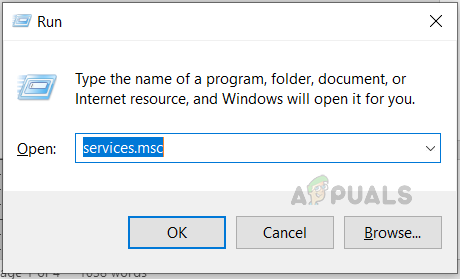
Type services.msc and click Ok - Once you are inside the Services window, locate and double-click on the Background Intelligent Transfer Service.

Double-click on the BIT service - In the Properties window, check if the Startup status lists Stopped. If so, click on Start and then click OK. If the service is already running, then click on the Restart button and hit OK.
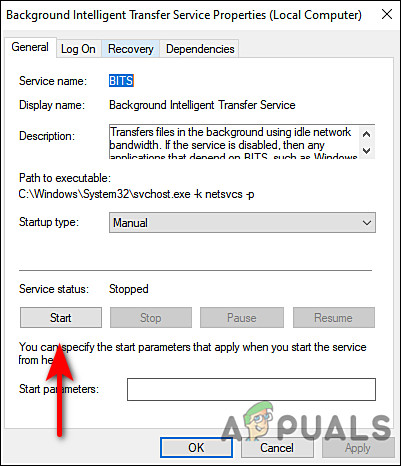
Start BIT service - Next, repeat the 3rd and 4th steps with the Windows Update service.

Launch Windows Update Service Properties dialog box - Finally, close the Services window and check if you can now install the cumulative update KB5008212.
Reset Windows Update Components
You also might not be able to install the cumulative update KB5008212 if the Windows Update components on your Windows are corrupt. The solution to this is simple, as all that you need to do is reset the components to get them up and running again.
Here is how you can do that:
- Type cmd in the search bar and click on Run as administrator to launch Command Prompt with administrative rights.
- Now type the commands mentioned below and hit Enter after each to execute them.
net stop wuauserv net stop cryptSvc net stop bits net stop msiserver
- Once done, execute the following commands one by one:
net start wuauserv net start cryptSvc net start bits net start msiserver
- Finally, restart your PC and check if the issue is resolved.
Install the Update Manually
If neither of these methods works for you or if for any reason you do not wish to follow the steps, you can forcefully install the cumulative update KB5008212 through the Microsoft Update Catalog by following the steps mentioned below:
- Launch your browser and head over to the Microsoft Update Catalog.
- Type KB5008212 in the search bar on your screen and hit Enter.
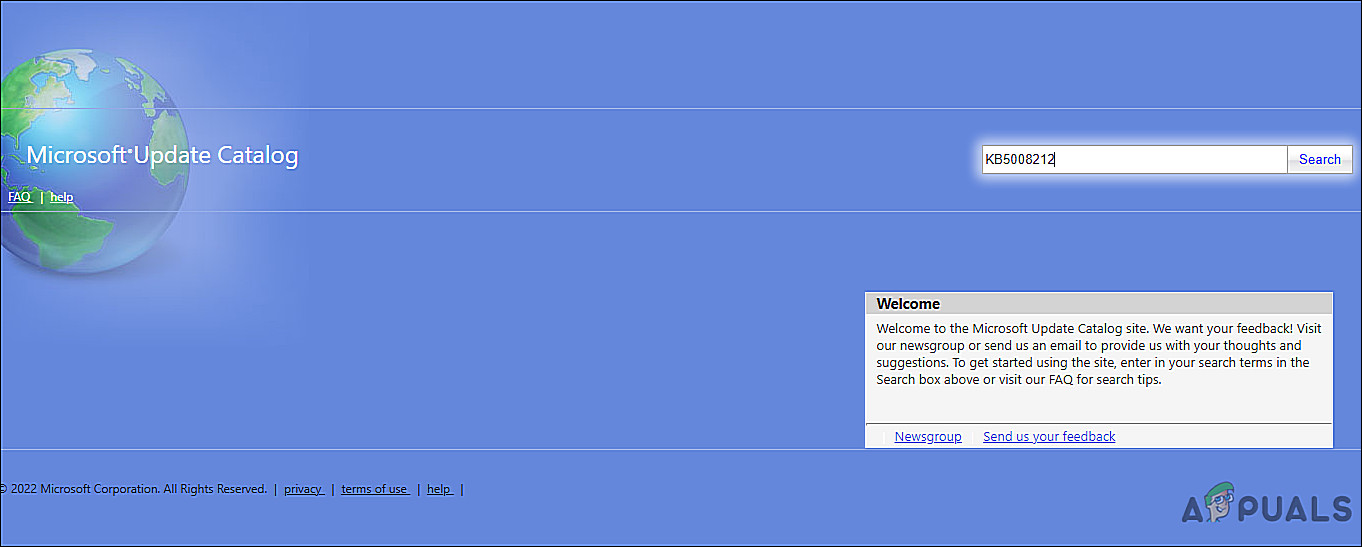
Enter KB5008212 in the Update Catalog - Now, depending upon your device type, install the update by clicking on the Download button.

Hit the Download button - After you’ve downloaded the file, run it and follow the instructions to complete the installation.
Upgrade via the Media Creation Tool
Should the Windows Update component be unable to be fixed, you can try installing the cumulative update KB5008212 directly through the Media Creation Tool.
Here is what you need to do:
- Launch your browser and navigate to the official download page for the Media Creation tool.
- On the download page Download tool is now under Create Windows 10 installation media.
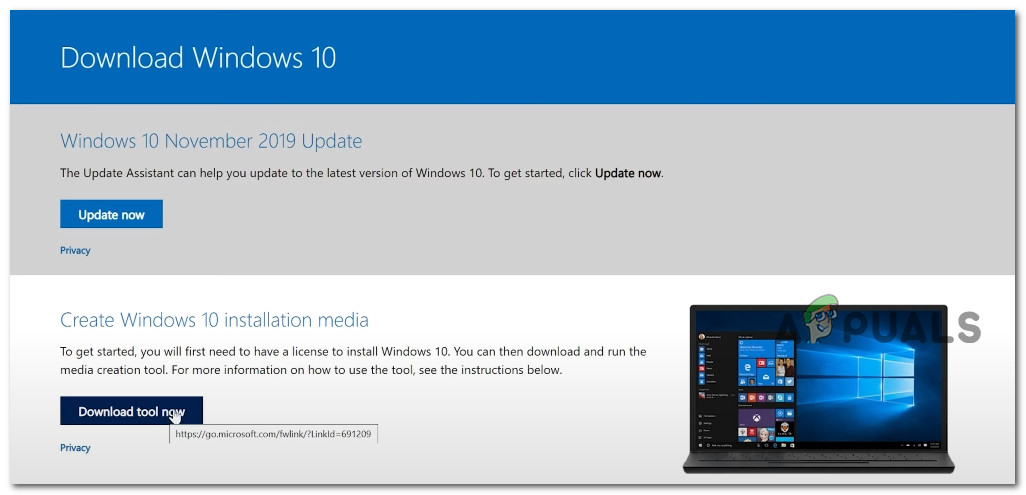
Downloading the Windows 11 installation media tool - Once the file downloads, double-click on it to open it. Hit Yes in the User Account Control (UAC) prompt.
- At the next screen, click on the Accept button.
- Once the initial scan is complete, select the Upgrade this PC now option and hit Next.
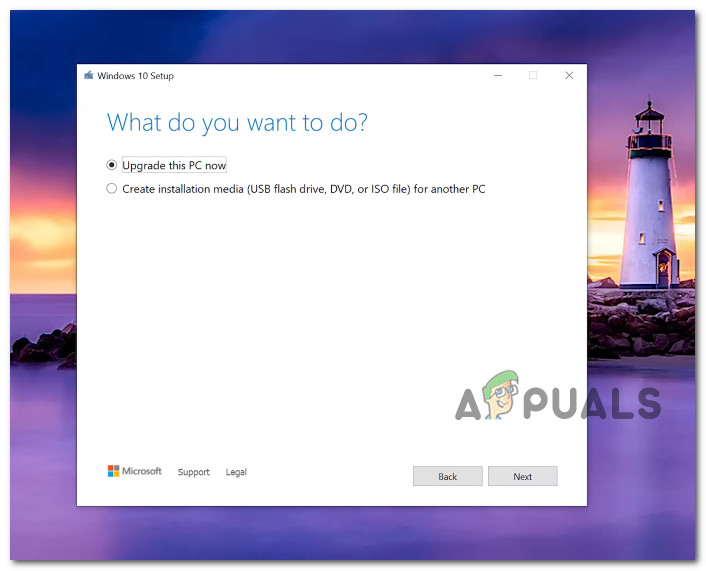
Upgrade this PC now - Now, wait until the Windows ISO is downloaded, then click Accept. You will need to wait until every update is downloaded locally so that the Media Creation tool can upgrade your OS to the most recent version.

Upgrade to the latest build available - After all pending updates download successfully, click Install and wait for the process to complete.

Upgrade to the latest OS version - Once the installation is complete, restart your PC.
Repair Install or Clean Install
By now, if none of the methods featured in this article have worked for you and you are still unable to install the cumulative update KB5008212, your only choice is to reinstall the system files. You can do so via Repair install and Clean install.
Clean installing – You will reinstall Windows with this method. You can do this if you want a fresh start. However, you will lose any personal files that you previously stored on the same partition as Windows.
Repair installing – Performing an in-place repair procedure will allow you to replace every corrupted Windows file while preserving your personal files (including applications and games). However, this process is a bit lengthy.





